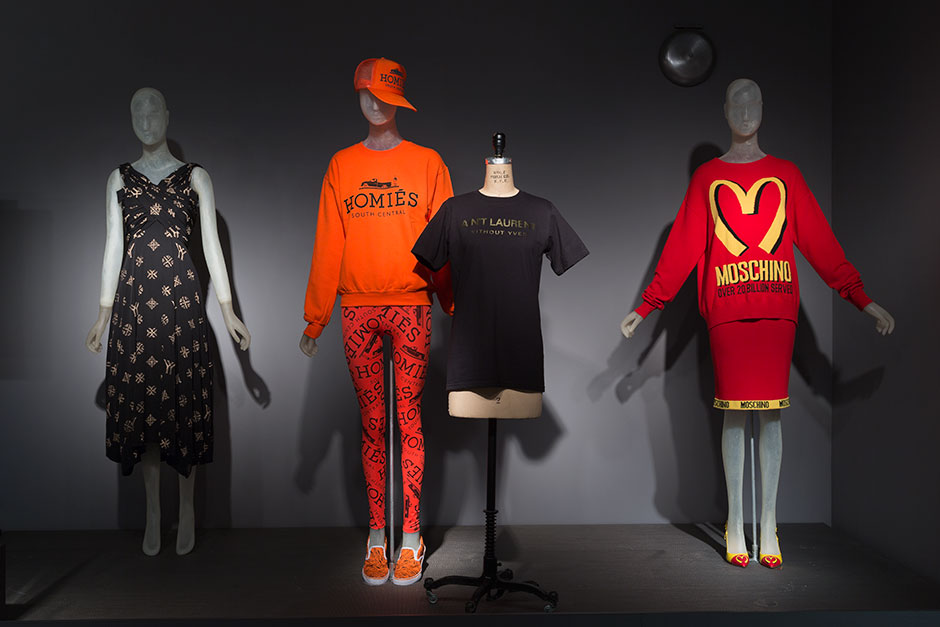
A couple of weeks ago I had the chance to attend a special tour and talk with Ariele Elia, curator of the Faking It: Originals, Copies and Counterfeits exhibition that is currently being held at the Museum at FIT. The exhibition explores not only the issue of copyright infringement and counterfeits in fashion, but also other ways in which copying—both in authorised and unauthorised ways—has led to dubious authenticity in the fashion industry.
The exhibition starts by showing examples of the first well-known fashion copies, which included the copying—sometimes licensed and authorised by the original creators of the clothes—of French designs in America. The exhibition includes the example of a Chanel suit, presenting both the Chanel version and the licensed copy, as well as a licensed copy of Pierre Balmain’s Angel evening dress and a version of Dior’s New Look created by Nettie Carnegie in New York.
It is also possible to see some moments in fashion where inspiration has been taking from art throughout the years. Examples of this, in the exhibition, include the very well-known Mondrian art—and the Yves Saint Laurent dress, among the multiple garments that emerged from the artist’s work—as well as Andy Warhol’s art for Campbell soups. This part was particularly interesting to me because, although I have seen the use of recognised artwork in fashion more than once, for some reason—and even though it is pretty obvious—I had never thought of it as a problem for authenticity. But it, of course, contributes to it!
The exhibition then goes to explore the case of counterfeits, which is probably the most recognised example of fashion copyright infringement. The most interesting part is not seeing the different counterfeits showcased in the exhibition, but the several videos explaining the differences between originals and copies. I’ve always appreciated the art of fashion involved in the creation of high-end garments and accessories, and this part of the exhibition definitely shows that!
Finally, the exhibition shows some examples of parody in fashion. According to Ariele, the problem with parody comes when it is not clear and the consumers might get confused with the meaning of it. For example, Brian Lichtenberg’s “Homiés” ensemble seems to be clearly making fun of the Hermès logo in his designs. However, Yohji Yamamoto’s “YY” logo, which he debuted at his fall 2007 runway show, seemed to be too similar to the Louis Vuitton monogram, which has been used by the house for ages, making the designer probably cross the lines of copyright infringement.
I must accept I am by no ways a critic of such exhibitions and I know there is a very long path for them to go through and develop both a more academic standpoint and a way of including the social phenomena that shape fashion at determined points in time. And although this is also true for the Faking It exhibition at MFIT, I really did enjoy being able to attend the talk with the curator and learn from her.